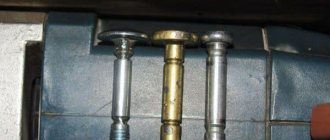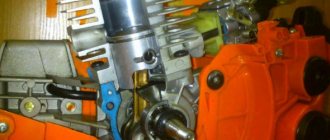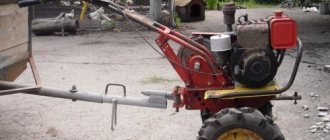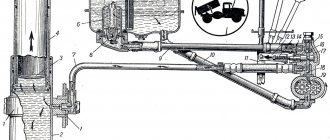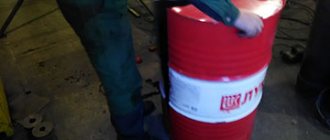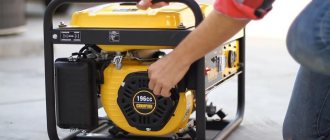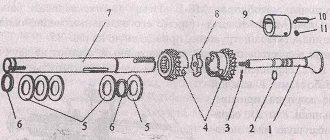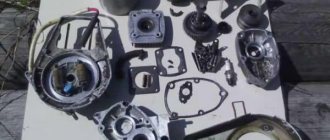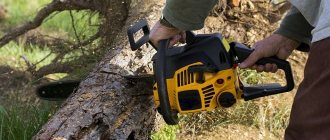Our specialized service center provides maintenance and professional repair of all types of snow blowers of a large number src=»https://servys.ru/upload/medialibrary/banner_product/snegouborchiky.jpg» class=»aligncenter» width=»414″ height=»321 ″[/img] It is probably difficult to find a tool that, in our harsh climate, should solve more important problems than a snow blower. Such high loads certainly affect the performance and characteristics of these devices. Try for a second to imagine how unpleasant it will be if the winter assistant fails at the height of the winter season - for example, after heavy snowfall. As a result, you will be forced to spend much more time and effort clearing the area from snow, working manually with a shovel that is very familiar to you, instead of devoting this time to your beloved family and leisure. We are ready to offer you an excellent option to minimize the risk of troubles in the future - we recommend regular annual maintenance of snow blowers. We can guarantee that we will repair any faulty snow blower.
almost all models and brands: be it models produced by the company
*
:
Construction of snow removal machines
To learn how a snow blower works, you must first understand what it consists of. The main elements are several parts.
An engine that has a 4-stroke motor. These engines are pre-adapted to winter frosts with a temperature of -31 degrees. In most cases, motors from famous companies such as Briggs & Stratton, Tecumseh are in demand.
If there is no air filter in the snow blower, then this is a characteristic sign of a winter engine, since the filter can become clogged with snow, freeze and turn into a plug. The snow blower must not be used all year round, as the device can be damaged not only by winter dust, but also by regular dust. A sleeved motor is considered repairable; it is installed on professional snowplows.
The gasoline model has a manual starter with a cord. Low-power machines have a manual start, while more powerful ones have an electric starter. The electric starter itself has two types - powered from a household electrical network and from an on-board battery. The first option can be started by connecting the motor to a power outlet and pressing the button. To start a cold engine, you will need an electric starter.
Snowplows can be self-propelled or non-self-propelled. Snowplows are often equipped with a manual transmission. Some models have CVT and hydrostatic transmissions with different numbers of speeds. Snow blowers have 5 gears in the front and one gear in the rear.
The edge of the screws can be of two shapes: serrated and smooth.
The 2-stage snow blower has a strong, powerful auger. Its function is to crush stuck together lumps of snow; and it can also push snow to the center of the bucket, where the snow discharge to the impeller is located. The impeller itself will not be able to crush the snow. Its task is to set the speed for incoming snow. The snow is thrown aside.
In single-stage types, the augers may touch the ground during rotation, so they are made of metal or rubber plastic. Thanks to the rubber-plastic material, the auger will easily withstand collisions with pebbles; will not be able to break or become deformed. And a screw made of metal may break in this case.
The tires are branded with an X and V tread pattern. These tires have good grip.
The outlet chute can have two options: metal and plastic. Metal has virtually no vibration. It is more durable and accurate for throwing snow. But a plastic gutter prevents snow from sticking to the device, costs much less and will not rust.
The gearbox can transmit torque from the shaft to the augers. Support skis provide good glide. They hold the front of the device. They can be adjusted in height by setting the degree of snow removal. There are double-sided skis that can simply be turned over when worn. The scoring knife, which is located at the bottom of the bucket, should not touch the ground.
Snow blower chassis come with wheels or tracks. Wheels move without turning on the engine. The tracks are more resistant to ice and slopes. The frame may include circular cross-section tubes. There are brands with rectangular tubes, they can ensure the strength of the device.
Snow blowers also have the necessary lights, which are charged using an on-board generator. All snow blowers have a control program with which you can adjust the engine speed, turn on or off the gear and wheel drive, you can adjust the height, direct the snow discharge, and so on.
To set the direction, you need to rotate the outlet chute. Ordinary models have a handle for this purpose. You can often find a worm gear. To make a turn, you need to twist a special handle.
It is very rare to find snow blowers that have an electrically driven directional control design. Professional machines have levers that are located on the panel. Using such a lever, you can change the height without interrupting the movement.
How to disassemble a snow blower with your own hands
Regardless of the reliability and quality of the snow blower, its owner should carefully study the design and be able to repair the unit.
This will help save a lot of time and money.
Moreover, the owner will always know that he installed a really high-quality part, and he was not deceived during the service.
How to repair snow blowers and what breaks most often
Each owner should be able to independently repair a snow blower, because most often this equipment is used in country cottages or houses where it is not always possible to get to a service center.
The power of such a device is just enough to remove snow from the area near the house, without having to practice with a shovel every day.
Before you start repairing a snow blower, it is worth studying its structure and understanding the most common types of breakdowns that you can fix yourself. After all, many need professional intervention.
Construction of snow blowers
Equipment may vary in technical characteristics, type of engines and movement.
However, every snow blower has a few parts that are similar to other machines. This allows us to identify a standard set of main constituent elements, including:
- Power unit. A snow blower can have an electric or gasoline engine. The first is distinguished by its efficiency, and the second has high power.
- Ladle. The bucket contains a screw shaft, which acts as the main mechanism for removing snow. The width of the bucket affects the width of the strip the snow blower can process at one time.
- Screw mechanism. This unit contains a metal shaft on which there are screw parts located with screws closer to the center of the shaft. They are the ones who shovel the snow closer to the middle, and there the shovel pushes it into a specialized chute.
- Outlet chute. Made in the form of a pipe that throws snow at a stated distance. It can be made of metal or plastic.
- Chassis. Most often, the equipment has wheels, but there are machines on tracks.
- Handle with other controls. The clutch is located just near the operator, there is also a switch that directs the chute and other buttons with levers that help control the unit.
- Rotary mechanism. Some models have an impeller that further crushes the snow before sending it into the discharge chute.
Of course, this is not the entire list of components of a snow blower. Some models are equipped with additional elements, but these are not particularly important when considering the overall concept.
The most common breakdowns
Any breakdown is the result of improper operation of the equipment by its owner, so any spare part or component can break.
Brands of snow blowers accepted for repairs
AL-KO Briggs&Stratton Champion Cub Cadet DPP DDE Honda Husqvarna Huter Hyundai MTD ) Patriot RedVerg Stiga Craftsman Elitech MasterYard Murray Poulan Snapper Alpina CastelGarden Mountfield Caiman (Cayman) Efco (Efko) Oleo-mac (Oleo-Mac)
All brands of snow blowers
Ryobi Hitachi Honda McCULLOCH Partner Pubert Karcher Yard Machines Yard-Man Wolf-Garten SunGarden
Our Servy service center also repairs such snow blowers as: ABM, AFC-Group, Agroma, Agrostar, Aiken, Alaska, APEK AS, Ariens, ARMADA, BauMaster, Beezone, Briggs & Stratton, BUFF, Canadiana, Carver, Catmann, Chelmann, CMI, Cosmos, Crosser, Dobest, Eland, ENIFIELD, Ergomax, Etaltech, Eurosystems, Expert, Faworyt, Fermer, Fest, Firtmate, FORTE, FOWARD, Forza, Fujii, G-Power, Garden Tool, Gardenpro, Green Fieid, GRENLINE, Greenworks, Handy, Hecht, Helpfer, Herz, Home Garden, Hortmasz, IdealArt, IHATSU, IKRAmogatec, INTERTOOL, Iron Angel, ITC Power, JLT-Power, Jonsered, Kansas, Kawashima, Kipor, Krotof, Lux Tools, Mac Alister, Magnum , Manner, Mark Garden, MAXCUT, MEGA, Mega Pro, Monferme, MotoLand, NAC, Nikkey, Nomad, Omaks, OMAX, OMI Robotics, Park, Parton, PEZAL, Plato, Profi, Prorad, RedVerg, Rein, Robbyx, S2, SADD, Saturn, SD-Master, ShtormPower, Simplicity, Skiper, Sno-Tek, Snow Fox, TERO, Texas, Top Machine, Top Tools, Toro, Tsunami, UMC, Uwer, Victa, Villager, Workmaster, Worx, Wotex, Zirka , Zmonday, Brigadier, Varyag, Friendship, Interskol, IOLA-K, Caliber, KAMA, Centaur, Kraton, Leader, Dream, Mobile K, Proton, PROFER, Lynx, SOYUZ, Tarpan, Tselina, Energoprom, Enkori
and others.
Friction disc for a snow blower - making the part yourself
Buying a new friction disc for a snow blower will not entail significant financial costs. However, many craftsmen make friction discs from improvised materials. It should be noted right away that the homemade part must be perfectly flat, which can only be achieved after prolonged work with a file. The procedure for making a friction disc is as follows:
- First, find a workpiece made of aluminum or any other soft metal - such a product will be easier to process;
- Cut a circle along the outer contour of the old friction ring from a metal blank. It will not be possible to do this perfectly evenly with the help of a grinder, so all irregularities will have to be processed with a file;
- The most difficult step in making a friction ring for a snow blower is making a straight hole inside the disc. You can use a drill for this. Drill several small holes in the center of the workpiece with a thin drill, which should be located next to each other. Carefully cut off the jumpers that remain between the holes using a chisel. This way, the excess parts of the disk will fall off, and you will be left with a ring with a lot of jagged burrs that will need to be removed with a file.
After making a snow blower disc, you will need to put a rubber seal on its edges. Find a ring that has the appropriate diameter and pull it onto the finished product. To ensure that the seal sits firmly on the disk, use “liquid nails” glue.
Installation and testing of a homemade friction disc is carried out in the same order as in the case of a factory disc. After practicing making disks, you can continue to install homemade parts on your snow blower, saving a good amount of money.
Types of gearboxes in snowblowers
The torque of the snow removal unit created by the motor is transmitted to the working parts using a power take-off shaft and a V-belt drive. A gearbox located near the machine engine is attached to the shaft via a screw mechanism. In this case, snow removal equipment can be equipped with two types of gearboxes:
- Serviceable gearboxes - mechanisms of this type require periodic disassembly for partial or complete maintenance. Such elements have a longer service life; their components are made of bronze, due to which the gear of the snow blower gearbox is much less susceptible to wear;
- Maintenance-free gearboxes - such units do not require maintenance, but at the same time they cannot be repaired. In case of any malfunction, the mechanism must be removed and thrown away, and a new part installed in its place.
Gearboxes of the second type are equipped with cheaper models of snowplows - units made in China and Korea. Mechanisms of the first type are used in equipment of European, Japanese and American brands.
Instructions
Over time, everything breaks down. Any technique has a limit of strength and does not work forever. As for the Patriot, Champion, Honda, and Foreman snow blowers, some of their components are specially prepared so that breakdowns of special simple parts occur in them.
Shear bolts
Thanks to this, you can keep all important parts intact. This part, the shear bolts, is the second consumable of the snow blower, after gasoline.
The shear bolts are made in such a way that they come off on their own in the event of excessive load on the auger. In this case, the gearbox will remain intact, and the bolts just need to be replaced. But you won’t learn to buy them all the time for reasons of economy.
Shear bolts
The cost of the kit, although not very large, becomes very noticeable when the consumption is high. Therefore, you should seriously think about how to make shear bolts for a snow blower with your own hands.
To do this, you need to take bolts of the required diameter, be sure to note that the diameter of the bolt is the same along the entire length, this is important, and simply transfer the dimensions of the original shear bolt to the workpiece. Next you just need to make grooves in those places where they are on the original bolts
In principle, not a difficult operation, but useful for the wallet
In principle, not a difficult operation, but useful for the wallet.
Caterpillars
As for the tracks for snow blowers MTD, Huter, Kraftsman, Stig, much more tools and consumables will be required. But the result will still be beyond praise. One simple option is to make tracks from an old tire.
Its main advantage is that the result is a closed circuit, which means durable and reliable.
It is also quite simple to make - you need to cut off the edge from an old tire of the required size. A knife dipped in soapy water or a jigsaw with a fine-toothed attachment is suitable for this. After the jigsaw, it is best to process the edges to achieve greater smoothness to avoid tears.
If necessary, you can completely solder it. The only drawback of this design is the fixed size of the future caterpillar. But if necessary, you can make a larger cut if you need a narrow track, or tie two together if you need a wider one.
Gearbox
As for the gearbox, everything is simple - its service life is the longest of all moving parts. The gearbox transmits the driving moment from the engine to the auger and is located on the axis of the auger.
In fact, several gears, with regular lubrication, will not cause any special problems, especially since the total time of use of the snow blower does not exceed several tens of hours.
This video shows the assembly of a snow blower gearbox.
Friction disc
Another part that often breaks is the friction ring. Too much force on the wheels leads to the fact that the wheel-friction disc pair slips, which causes the friction ring to wear out and then break.
As a result, the friction wheel, made of steel, leaves deep grooves in the aluminum friction disc. But these are not the only problems. In the process, the belts wear out and the clutches completely fail.
And due to the fact that it is practically impossible to make such a ring at home, it is better to carefully monitor the progress of the snow blower and not try to skid on it.
The video shows how to replace the friction disc.
Chains
Snowblower chains, it's just a parade of diversity. Here you can see absolutely all types of them, especially if it is made by yourself. Absolutely everything is suitable for connecting the motor and auger. Homemade installations often use bicycle chains along with bicycle sprockets.
But this option is only suitable for low-power units. As for wheel protection, it can also be replaced with improvised means. It is enough to have a piece of chain at your disposal, and, at best, a welding machine.
But if it is not there, you can get by with simply riveting it with a hammer. The only condition for making the correct chain for a wheel is that it should not be too small and too loose. And the best option is the shape of a ladder.
True, it is possible to make something similar at home, but such a product will be far from having the functionality of a factory part. Here, cheapness is very inferior to quality.
Frequent malfunctions
If used incorrectly, the snow blower may break down. The device also contains parts that can fail as a result of dirt and rust. Before turning on the device, you need to read the instructions thoroughly.
There are some basic breakdowns in a snow blower.
The most common problem is broken keys, that is, shear bolts. With their help, the screw parts are strengthened. The bolt material is soft metal. If the snow blower accidentally hits any obstacle, the bolts will be cut off and the mechanism shaft will stop. Dowels are a necessary consumable. Every owner of a snow removal device should have them in stock.
If you save on buying shear bolts by replacing them with ordinary bolts, the snow blower may completely fail. In this case, you will have to purchase a new device. Shear bolts can serve a safety purpose, that is, they can protect the main elements - the engine and the rotor structure.
Among the breakdowns, there is also a failure of belts. When purchasing a snow blower, you can purchase a spare drive belt. If a snow blower is constantly clearing snow, the belt itself can become very worn, causing it to break. Belts can go to wheel bases, and can be driven for an auger design.
Friction disc failure is another common problem. They can drive wheels. There is a special friction wheel, it is pressed against the disk. When it starts to rotate, it can transmit movement to the wheels using gears. If the load on the wheel structure is exceeded, the entire friction ring may fail, and the steel friction wheel may damage the soft structure of the aluminum disk.
For the most part, these breakdowns lead to the fact that the snow blower will not start and will not function normally. In order for the device to work, it is necessary to either replace components or completely repair it.
Snow blower gear lubrication
Stable operation of the unit depends on many factors, the main one of which is high-quality lubrication. The oil used to service the snow blower mechanism must have the following properties:
- frost resistance - since the snow blower is used at extremely low temperatures, the lubricant for its gearbox must retain its structure under constant exposure to frost;
- high fluidity - the oil must quickly penetrate into the smallest grooves and holes, thereby ensuring continuous lubrication of rubbing parts;
- viscosity - the working fluid must be thick enough to cover the working parts of the unit with a durable, homogeneous oily film.
Replacing used lubricant in a mechanism that has lost its properties is quite simple.
To do this you need to act in this order:
- First you need to remove the screws and remove the casing;
- After this, the operator will need to unscrew the bolts located directly behind the “snail”;
- Then you need to carefully remove the factory auger belt installed on the factory pulley;
- Next, you need to unscrew the bolts one by one, which firmly secure the shaft of the built-in auger;
- After this, you need to carefully turn the “snail”, and also remove the auger and the impeller installed on it;
- Then you will need to unscrew the standard shear bolts and completely disassemble the mechanism shaft;
- In the end, the operator will have to completely disassemble the built-in gearbox itself.
https://youtube.com/watch?v=ptYGBLcnVA4
After this, you will need to thoroughly rinse the mechanism parts. The operator can then reassemble the factory snow blower gearbox and apply new lubricant.
Dismantling and lubrication of snow removal equipment gearbox
Before lubricating the gears and other elements of the gearbox, you need to completely disassemble the mechanism. Today you can hear a lot of advice on how to remove the gearbox on a snow blower. All of them can be described in the following algorithm:
- First of all, it is necessary to dismantle the belt protection casing and the auger drive cable;
- Next you need to unscrew the bolts that are located behind the “snail”;
- After this, you will need to remove the auger belt from the pulley;
- Next, you need to unscrew the bolts holding the auger shaft;
- After this, you will need to turn the “snail” and pull out the auger along with the impeller;
- Next you need to remove the shear bolts and disassemble the shaft;
- Finally, you will need to disassemble the gearbox itself.
Many beginners do not know how to properly disassemble the gearbox itself. To do this, you must proceed in the following order:
- First you need to clamp one of the shaft parts with a vice;
- After this, you will need to unscrew the 6 bolts securing both parts of the gearbox together;
- Next, you need to take a hammer and lightly tap on the gearbox housing.
The disassembled gearbox must be dipped in gasoline to completely wash off the remaining old lubricant.
Lubricant for the snow blower gearbox is applied according to a certain algorithm:
- First, you need to clean the gearbox and fitting from any remaining old oil;
- Next, you need to unscrew the fitting and use a syringe to add the amount of lubricant required for the job;
- After this, the fitting must be screwed back in and the mechanism must be assembled in the reverse order.
Most snow blower manufacturers warn customers in advance that there is insufficient lubricant inside the gearbox. In such cases, oil must be added after the first ten hours of operation of the snow blower.
How to properly change the lubricant - how to lubricate
Many people ask the question: how to remove the gearbox from a snow blower in order to carry out a scheduled lubricant change? This is not as simple as it seems at first glance, so we will describe this process step by step:
- We unhook the plastic belt protection cover, as well as the auger drive cable.
- We unscrew the bolts that are located behind the snow ejection snail.
- Next, you need to remove the auger drive belt from the pulley.
- Next you need to unscrew the bolts securing the auger shaft.
- Then you need to turn the snail to its natural position, after which we take the gearbox and pull out the screw mechanism with the impeller.
- We remove the shear bolts securing the auger to the shaft, and then disassemble it.
- The gearbox itself needs to be disassembled into two components.
How to disassemble a snow blower gearbox with your own hands - diagram
A reasonable question arises: how to disassemble a snow blower gearbox? The sequence of actions will be as follows:
- We clamp in a vice one of the parts of the shaft on which the gearbox is located.
- There are six bolts on the gearbox that connect the two halves of the housing. They need to be unscrewed.
- We take a hammer and tap the gearbox housing a little to make it easier to divide it into two halves.
The disassembled parts of the gearbox are cleaned in gasoline to wash away any remaining old lubricant.
If you have a snow blower purchased at a specialized store, then the question of how to lubricate the gearbox should not arise. All information is specified in the operating instructions for a specific model, and it is also written there what type of lubricant is recommended to be used for a specific gearbox.
However, it happens that it is quite difficult to find it. In such cases, gear lubricant is used for snow blower gearboxes from several manufacturers - Multifak, Litol, Tsiatim, etc.
To add a certain amount of lubricant to the gearbox, you need to do the following:
- Clean the gearbox and fitting from any existing dirt.
- Unscrew the fitting and then pump in the required amount of lubricant using a syringe.
- Screw the fitting back.
- It is important to understand that the presence of lubricant in the gearbox is a prerequisite for the quality operation of the entire snow blower. Therefore, it needs to be replaced before each new season.
By the way, some companies warn the owner of the snow blower in advance that the gearbox is not completely filled with lubricant, so it must be refilled after the first ten hours of operation of the unit. DIY gearbox, watch the video:
Attachments for walk-behind tractor: homemade snow removal bucket and auger
The photo below shows a version of a homemade Cuznetzov snow blower, made in the form of an attachment to a walk-behind tractor.
The portal user already has a factory-made snow blower, so his thought process when creating a homemade product is interesting.
A commercial snow blower handles regular snow well. I will throw my homemade product into the “battle” of removing heavy wet or trampled snow, icy crust, which can only be broken with a shovel.
So, a homemade snow blower is intended for heavy work, for which it would be a pity to “kill” the branded unit. This determined its design:
- Open type screw made of thick metal.
- Powerful motor, gearbox and transmission.
- Big wheels.
The last two points are best answered by the drive of a snow blower - a walk-behind tractor. All that remains is to make the auger and select parts for the gearbox. The work was divided into stages:
- Making a bucket and auger.
The ladle is made from an old metal barrel.
- Bucket after painting.
- The gearbox is taken from an old Ural motorcycle.
Turning work was also required.
A snow blower made by hand from scrap metal in assembled form. For comparison: next to the homemade product there is a factory (blue) snow blower.
After testing the snow blower, I can say that it takes any snow: stale, with ice, with debris, wet. Among the disadvantages: 1. The further you drive into the snowdrift, the higher the snow blower tries to climb onto it. This is due to high screw speeds and low torque. In dense, heavy snow, the auger choke and the engine of the walk-behind tractor loses speed. 2. When clearing frozen crust for the first time, I tore the right auger. The second time I bent the impeller and cut off 7 bolts. I fixed everything quickly. A factory snow blower would not be able to work in such conditions, if these were not flagship powerful models of equipment.
Conclusion: an open auger is an advantage when working on frozen snow. A motorcycle gearbox is not the best option, but it can withstand loads that would kill the gearbox of a regular snow blower one or two times.
Subsequently, Cuznetzov installed wheels with developed lugs on the walk-behind tractor and, without a shovel, made paths in the snowdrifts with a snow blower.
The user also plans to remake the bucket and remove the gearbox from it. Increase the rotor speed to throw snow further. Reduce the speed of the auger and make it and the shaft even stronger, so as not to have to straighten the metal after working on old snow.
Operating principle of the unit
Snow blower MTD
Auger and rotary snow blowers work the same way. The machine starts, the bucket enters the snowdrift, and the rotor or auger, rotating, feeds snow to the middle, which falls into the chute and is thrown to the side.
Auger and rotary snow blowers work the same way.
The two-stage apparatus contains both a rotor and a screw in the casing. The actions of the auger lead to the accumulation of snow in the middle of the casing, and the rotor picks it up and throws it out through the drain.
The devices differ from each other in additional options such as:
- halogen headlights;
- heated handles;
- electric starter;
- control function for each wheel separately;
- auger for transverse excavation of snow drifts (for railway tracks).
Additional Tips for Repairing Snow Blower Problems
As mentioned earlier, the most important reason for possible breakdowns is improper operation of the device. The same can be said for storing your snow blower. Many people believe that all storage consists of putting the unit in a dry place until it is needed again.
This approach is fundamentally wrong, which leads to numerous problems in the future.
Change of oil
In general, proper conservation will look like this:
- After the end of winter, i.e. After finishing the actual operation of the snow blower, it is necessary to drain the oil and fuel from it.
- Wipe the entire body dry with a cloth, and then put it in a dry place.
- Before winter, you need to re-preserve it, i.e. add new oil, check belt tension, check spark plugs, etc.
An important issue will be the choice of oil that you are going to use. The optimal solution would be to use seasonal oil that has a lower viscosity. At the same time, you don’t need to look at the brand that produces the oil.
First of all, you need to choose oil based on the model of the engine being used. In principle, the operating instructions indicate exactly what kind of oil is recommended to use for a specific model of snow blower, so this is another reason to still look at the instructions.
Snow blower repair cost*
Service specialists can carry out inexpensive diagnostics of the device, and if irregularities in its operation are identified, they can carry out professional repairs of a gasoline or electric snow blower, which will be performed at the highest level. Do not neglect preventive diagnostics and repair work. Do not forget that the correct and reliable operation of any tool is the key to your safety. The final cost (price) of the necessary repair of a gasoline or electric snow blower largely depends on the manufacturer’s price list for spare parts and is agreed upon with the customer by telephone after a fault diagnosis has been carried out by a technician.
The cost of repairing snow blowers is from 500 rubles.
| Name of repair work for gasoline snow blowers | Cost of services, rub.* |
| Carburetor adjustment | 1900-2300 rub. |
| Starter replacement | 1100 rub. |
| Starter repair | 900-1300 rub. |
| Replacing the spark plug | 100 rub. |
| Replacing the carburetor | 1700 rub. |
| Replacing the ignition coil | 900 rub. |
| Ignition adjustment | 1100 rub. |
| Replacing the impeller | 1100 rub. |
| Replacing the throttle control cable | 1300 rub. |
| Adjusting the throttle cable | 500 rub. |
| Replacing the air filter | 100 rub. |
| Comprehensive maintenance of gasoline snow blowers (works) | from 1900 rub. (from model) |
| Name of work on repair of electric snow blowers | Cost of services, rub.* |
| Replacing the power cable | 1100 rub. |
| Replacing the power button | 900 rub. |
| Replacing the drive belt | 900 rub. |
| Replacing the impeller | 900 rub. |
| Replacing the drive control cable | 1300 rub. |
| Adjusting the ride control cable | 500 rub. |
| Comprehensive maintenance of electric snow blowers (works) | from 1100 rub. (from model) |
Repair of snow removal equipment - methods of repairing units
In various models of snow blowers, other breakdowns may occur that are associated with the design features of these snow blowers. For example, Craftsman snow blower repairs often focus on repairing chute problems. In this case, the first thing to do is to make sure that the safety bolts and the worm gear are intact. To do this, you will need to dismantle and disassemble the unit gearbox. This is done in the following order:
- To begin, disconnect the bucket from the unit frame;
- Next, carefully pull out the gearbox;
- Then remove and check the “worm” that is located on the shaft. Most often it is cut off from the mechanism;
- To fix the problem, buy a new “worm” and install it in place of the old part.
One of the most common problems with Patriot snowblowers is the engine not starting. In such cases, experts advise immediately checking the engine compression. If this indicator is within 6–8 atmospheres, then the problem can be eliminated by replacing the old starter cord. To do this you need to act in this order:
- Remove the protective panels and unscrew the return mechanism;
- Cut the old cord and untie its knot inside the starter box;
- Turn the mechanism 7 full turns counterclockwise and secure it with a screwdriver;
- Insert the new cord and tie it into a tight knot in the place where the old cord was secured;
- Release the return mechanism and it will rewind the cord itself.
If this does not help, then you will have to buy a new engine for the snow blower.
Owners of Profi brand snowplows often have to figure out why their unit does not move forward. The reason for this may be hidden in the machine's gearbox. To quickly resolve the malfunction, it is necessary to disassemble the assembly and replace the damaged gear inside it.
Owners of Energoprom brand snow blowers often do not know what to do with excessive vibration of equipment motors. First of all, you will need to check the reliability of the support frames and engine mounts of the unit. Often it is quite enough to simply tighten the mounting bolts further, and the problem will immediately disappear.
What to do if your snow blower won't start
Snow blower "Neva"
First of all, check the fuel, or better yet, replace it. Usually this is enough. But there are other reasons not related to gasoline:
- The oil sensor for a snow blower blocks the start of the internal combustion engine. First, the oil level and quality are checked, then the serviceability of the sensor.
- The starter does not start. You should check the battery charge. If the starter is not broken, the snow blower should start after charging.
- The starter has difficulty turning the engine crankshaft. The reason may be that the oil thickens greatly in the cold. You need to tow the vehicle to a warm area and leave it there until the snow blower oil reaches the desired fluidity.
If the problem is in the spark plugs, then they should be cleaned of carbon deposits, dried and installed well. Then check the serviceability of the spark plugs. If they are working properly, but the device does not work, then the problem is in the ignition system. The snow removal equipment in relation to this system needs to be repaired.
The snow blower won't start, what should I do?
The device does not start easily if the air filters are clogged. They should be washed and dried. Also, the cause of unstable speed can be unregulated internal combustion engine valves.
When the vehicle does not start, the reason may lie in a malfunction of the carburetor. This can be caused by debris getting into the fuel channels, which prevents fuel from flowing into the mixing chamber for the snow blower. The carburetor will need to be cleaned.
Causes of malfunctions and repairs
Many experts advise choosing snow blowers that use a serviceable gearbox. Of course, it requires some handling, but it will last much longer than a maintenance-free gearbox.
However, this issue also has a second side - such gearboxes tend to break at the most inopportune moment. Using the example of Patriot, Tselina, Champion and Profi snow blowers, let's look at what gearbox failures can happen, as well as methods for eliminating them.
Repair
Possible problems:
- There are sharp knocking noises in the gearbox of a Champion snow blower - the most likely cause of this problem is damage to the worm turns or bearings. The way out of the situation would be to adjust or replace the bearings, as well as purchase a new worm pair.
- If you observe that the Patriot snow blower gearbox is overheating, then several factors may be causing this phenomenon. In particular, the issue may be due to insufficient lubrication or wear of the bearings.
- In the first case, you simply need to add the required amount of lubricant, and in the second, adjust the bearings or replace them with new ones.
- If the gearbox of a Profi snow blower vibrates very strongly, then the likely cause may be misalignment of the shafts and the engine of the unit. Thus, do-it-yourself repair of the Profi snow blower gearbox is carried out by eliminating this misalignment.
Profi gearbox
- If grease leaks from the Tselina snow blower gearbox, the likely cause may be a clogged drain hole in the vent. To correct this situation, you need to rinse the vent plug in kerosene and then wipe it dry.
- Another common cause is wear of the gear included in the gearbox design. This is understandable, because it is made mainly of bronze, so during long-term use, its edges can simply wear off.
- The only way out of this situation is to completely replace the gear with a new one.
In most cases, snowplow gearboxes can be repaired without requiring replacement. Of course, you may need to purchase individual gearbox components - oil seal, gear, etc. However, this is not such a big expense as in the case of purchasing the entire gearbox.
By the way, the cost of components may vary. For example, a 24 tooth snow blower auger gear will cost about 3 thousand rubles. By the way, gears of different types of gearboxes may have a different number of edges - basically, these are 20 teeth and 24 teeth, depending on the model of the snowblower.
For more information about gearbox repair, watch the video:
How to do it yourself
Making your own gearbox involves using various components from other equipment. The fact is that the gearbox itself is a rather complex part, so making it yourself is quite problematic.
In general, a DIY snow blower gearbox will consist of several important components:
Gearbox housing, consisting of two halves
It is impossible to make it yourself, so you need to purchase them separately. Fortunately, the cost of one half of the case is about 700 rubles, which is quite cheap.
Gear
To manufacture them, you will need special metal-cutting equipment, but the optimal solution would also be to purchase ready-made spare parts (see here). For example, the gearbox of a Patriot snow blower, the price of which is about 3 thousand rubles, will be the optimal solution.
Oil seals
They are used as a seal to prevent lubricant from leaking out. They cost about 100 rubles apiece, so purchasing them won’t break your budget.
Bolts
Shear bolts located on the gearbox shaft. They can be made from ordinary bolts by turning grooves using a grinder.
Bearings
Enclosed roller bearings can be used.
For these purposes, a pipe made of grade 45 steel, which is quite resistant to stress, is perfect.
As we can see, most of the components of a homemade gearbox are purchased separately, because There is no technical ability to make them yourself. In any case, self-assembly will cost much less than buying a ready-made gearbox.
